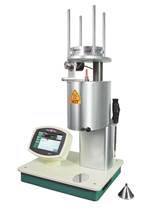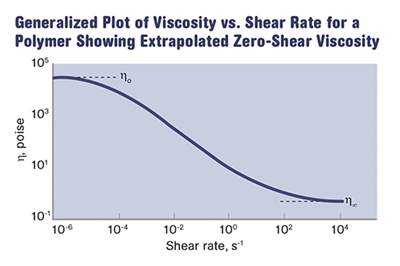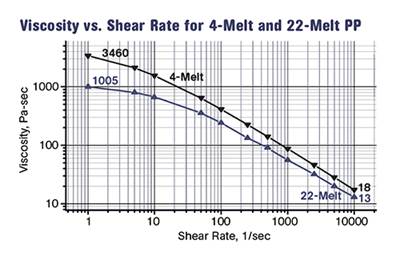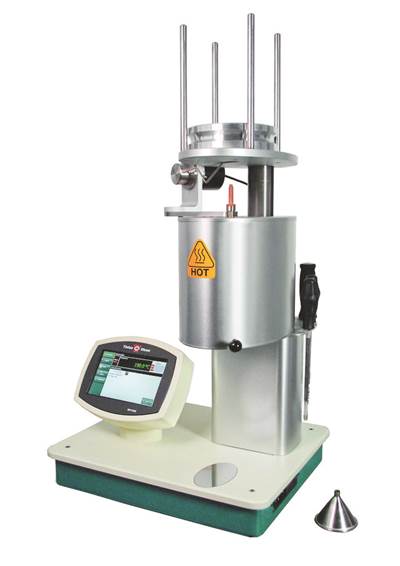Melt Flow Rate Testing—Part 9
Understanding the value of melt-volume rate.
If you spend a lot of time looking at data sheets you have probably noticed a trend over the last several years in how the melt flow rate (MFR) is reported. Along with, or instead of, the MFR, a new line item is appearing called the melt volume rate (MVR).
Whereas the MFR is reported as a mass per unit time, such as grams/10 min, MVR is given as a volume per unit time, such as cm³/10 min or, regrettably, in.³/10 min. I say regrettably because one of the areas where the U.S. is out of step with the rest of the world is in its use of the old inch-pound system of units as opposed to the metric system or SI units. We have spent billions of dollars over the last 20 years to adopt ISO standards for just about everything we do in industry, but we just cannot seem to let go of our antiquated system of units, with notable exceptions such as the automotive industry, where the change to SI units has been effectively mandated.
But there are a few areas where we have all become comfortable with the alternatives and one of those is the use of grams as a measure of mass and g/cm³ as a measure of density. When you go into most plants, if people are weighing parts they are recording the results in grams. And when you look up the density of a material on a data sheet the units are g/cm³. So it is somewhat of a mystery as to why we would go out of our way to backtrack to a unit of flow that uses cubic inches instead of cubic centimeters. Imagine the confusion that would result if suddenly one day we started publishing the density of polyethylene in lb/in.³ and a 0.955 density HDPE became a 26.437 HDPE. Converting from in.³/10 min to cm³/10 min is a simple multiplication by 16.4.
If the material supplier provides both MFR and MVR data, once you make this conversion you will notice that the numbers are similar but usually not identical. The ratio of the two values—the MFR divided by the MVR—is a measure of the melt density of the material in g/cm³. This is an important property because it is a different number than the solid-state density that is typically provided on the data sheets.
For example, unfilled and unpigmented polycarbonate has a solid-state density of 1.20 g/cm³ while the melt density of the material is 1.08 g/cm³, or 90% of the solid state density. This value has practical importance. First, melt density is a property input for flow-simulation software. It is also an important conversion factor for determining the capacity of an injection unit on a molding machine. Many people in the industry are aware of the fact that the shot sizes are given in terms of general-purpose PS.
But when converting from PS to, for example, PE, the tendency is to multiply by the ratio of the density values provided on the data sheet. So a 30-oz barrel would be considered to hold 27.5 oz of 0.955 HDPE. But these are solid-state densities and polymers are not solid when they are in the barrel, or at least we hope not. The melt density of HDPE is only 80% of the solid-state density, so the barrel capacity in HDPE is actually a little less than 24.5 oz.
There are some sensible reasons for converting to MVR. First, all of the equations in rheology that contain a term for flow rate use a volumetric flow rate, not a mass flow rate. At a more practical level, MFR—referred to by ISO standards as a melt mass flow rate—does not correct for the density of the material and therefore distorts the real rate at which the material flows through the instrument. Denser materials appear to be flowing faster simply because the material collected from the instrument is heavier.
Consider two PCs, one white and the other black. The white pigment is likely to be TiO2, a pigment with a density that is over three times higher than that of the polymer. If it is added at a loading of 4%, it can raise the density of the final compound by approximately 10%. The black pigment may be carbon black, which has essentially the same density as the polymer and therefore does not influence the density of the final compound. MFR tests that show a 10% higher value for the white material would appear to suggest that the white material is of a lower average molecular weight, when in fact the two materials would be identical when viewed in terms of MVR.
For materials with a melt density of 1 g/cm³ the MVR and the MFR will be the same. But this rarely happens. So if you have one supplier of a given material that lists only MFR and the other lists only MVR, you must know the melt density of the polymer in order to convert.
Fortunately, the MFR test, when run in a particular way, can provide this property. The piston that is used to force the material through the orifice has two scribes on it that are exactly 1 in. (2.54 cm) apart. The instrument can be set up to begin monitoring the test when the piston travel reaches the first scribe line and the test will end when the piston reaches the second line. Since the diameter of the cylinder is closely specified at 0.95504 + 0.00254 cm, the volume associated with this displacement can be readily calculated at 1.819 cm³.
By weighing the extrudate that comes through the orifice during this displacement, the melt density of any material can be calculated. For example, unfilled, unpigmented PC has a melt density of 1.08 g/cm³, so the mass of material displaced by this 1-in. travel should be 1.965 g with allowances for small variations due to the actual size of the bore and the precision of the operator performing the test.
We have spent a lot of time (nine monthly columns so far) on the topic of MFR testing. We have one more step in this process and that is to review some limitations of the method. Over the years there have been different attempts to address these limitations. Some of these have not gained traction in the industry while others are still in the early stages of development and show a great deal of promise in expanding our understanding of the practical aspects of polymer flow. We will cover those in the last installment of this series.
ABOUT THE AUTHOR
Michael Sepe is an independent materials and processing consultant based in Sedona, Ariz. with clients throughout North America, Europe, and Asia. He has more than 35 years of experience in the plastics industry and assists clients with material selection, designing for manufacturability, process optimization, troubleshooting, and failure analysis. Contact: (928) 203-0408 • mike@thematerialanalyst.com.
Related Content
The Fundamentals of Polyethylene – Part 2: Density and Molecular Weight
PE properties can be adjusted either by changing the molecular weight or by altering the density. While this increases the possible combinations of properties, it also requires that the specification for the material be precise.
Read MoreThe Effects of Temperature
The polymers we work with follow the same principles as the body: the hotter the environment becomes, the less performance we can expect.
Read MoreFundamentals of Polyethylene – Part 6: PE Performance
Don’t assume you know everything there is to know about PE because it’s been around so long. Here is yet another example of how the performance of PE is influenced by molecular weight and density.
Read MoreThe Importance of Melt & Mold Temperature
Molders should realize how significantly process conditions can influence the final properties of the part.
Read MoreRead Next
Melt Flow Rate Testing—Part 3
There is a well-established relationship between something called the weight-average molecular weight of a polymer and a parameter known as the zero-shear viscosity.
Read MoreMelt Flow Rate Testing – Part 2
To fully appreciate the strengths and weaknesses of the melt-flow-rate (MFR) test it is important to know something about the way the test is performed.
Read MoreMelt Flow Rate Testing–Part 1
Though often criticized, MFR is a very good gauge of the relative average molecular weight of the polymer. Since molecular weight (MW) is the driving force behind performance in polymers, it turns out to be a very useful number.
Read More.jpg;width=70;height=70;mode=crop)












